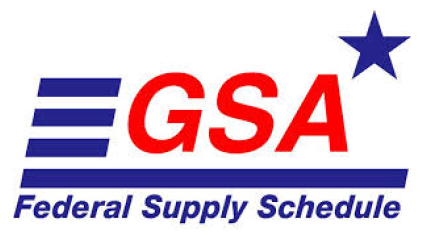The world of federal contracting is a complex ecosystem where the distinction between contractors and subcontractors is not just semantic but fundamental to the functioning and successful execution of government projects. Understanding these roles is crucial for businesses aiming to navigate the federal marketplace effectively. This expanded guide delves deeper into the intricacies of federal contractors and subcontractors, offering insights into their unique responsibilities, challenges, and how they contribute to the overarching objectives of government contracts.
The Central Figures: Federal Contractors
Federal contractors are the primary entities in a government contract. They hold the direct line of communication with the government agency, taking on the responsibility of ensuring the project’s success from inception to completion. Here are more detailed aspects of their role:
Strategic Planning and Bid Preparation
- Market Analysis: Successful contractors conduct thorough market analyses to identify potential opportunities and align their offerings with government needs.
- Bid Strategy: Crafting a winning bid involves a deep understanding of the project requirements, strategic pricing, and demonstrating an ability to meet the government’s objectives.
Compliance: A Multifaceted Challenge
- Regulatory Navigation: Contractors must navigate a labyrinth of federal regulations, from the Federal Acquisition Regulation (FAR) to specialized requirements based on the project’s nature (e.g., IT security, environmental protections).
- Ethical Considerations: Maintaining ethical standards is paramount, with strict adherence to anti-corruption laws like the Foreign Corrupt Practices Act (FCPA).
Project Management Excellence
- Quality Assurance: Implementing robust quality assurance processes ensures that deliverables meet or exceed government expectations.
- Stakeholder Engagement: Effective communication with stakeholders, including the government agency, community, and project team, is vital for smooth project execution.
The Supporting Cast: Subcontractors
Subcontractors are the hidden backbone of many federal projects, providing specialized services or products that the primary contractor might not possess in-house. Their contribution, while indirect, is no less critical to the project’s overall success.
Specialization and Innovation
- Cutting-Edge Expertise: Many subcontractors bring highly specialized skills or innovative solutions that are crucial for complex federal projects.
- Flexibility: Their smaller size often allows for greater agility and adaptability to project needs.
Compliance and Quality
- Secondary Compliance: Subcontractors must comply not only with federal standards but also with the primary contractor’s internal policies, creating a dual layer of compliance requirements.
- Quality Contributions: The work of subcontractors directly impacts the quality and integrity of the final project deliverables.
Bridging the Gap: Partnership and Collaboration
The relationship between contractors and subcontractors is characterized by a delicate balance of independence and interdependence. Successful partnerships are built on:
- Transparent Communication: Regular, open lines of communication help preempt issues and align project objectives.
- Mutual Respect and Trust: Recognizing the value each party brings to the table fosters a collaborative environment.
- Effective Conflict Resolution: Establishing mechanisms for resolving disputes and misunderstandings is essential for maintaining a healthy working relationship.
Enhancing Understanding: Capitol 50’s Role
In this complex landscape, Capitol 50 emerges as a beacon for businesses venturing into or navigating the federal contracting space. Offering a wealth of resources, from compliance guides to strategic bidding tips, Capitol 50 empowers businesses to:
- Stay Informed: With up-to-date information on regulations and opportunities.
- Build Capacity: Through workshops, webinars, and training sessions tailored to federal contractors and subcontractors.
- Foster Connections: By facilitating networking opportunities with government agencies and between contractors and subcontractors.
If you have questions with Federal Contracting, BOOK YOUR FREE 30-MIN CONSULTATION CALL with us today!
Final Thoughts: A Dynamic Ecosystem
The dynamic interplay between federal contractors and subcontractors is a testament to the collaborative effort required to fulfill government contracts successfully. Understanding each role’s nuances, challenges, and best practices is essential for any business looking to thrive in this competitive space. As we’ve explored, the synergy between contractors and subcontractors underpins the successful delivery of government projects, with Capitol 50 serving as a critical resource for navigating these waters.
FAQs on Federal Contractors and Subcontractors
Q1: How do I become a federal contractor?
A1: Becoming a federal contractor involves obtaining the necessary certifications, registering in the System for Award Management (SAM), and bidding on contract opportunities posted on government platforms such as beta.SAM.gov. It’s also beneficial to understand the federal procurement process and standards.
Q2: Can a subcontractor directly communicate with the government agency awarding the contract?
A2: Typically, subcontractors do not communicate directly with the government agency. The primary contractor acts as the intermediary. However, there may be exceptions depending on the contract’s terms and the primary contractor’s policies.
Q3: Are there specific regulations that subcontractors must follow?
A3: Yes, subcontractors must comply with all federal regulations relevant to the contract, as well as any additional requirements imposed by the primary contractor. This includes adherence to labor laws, safety standards, and security protocols.
Q4: How can subcontractors find opportunities to participate in federal contracts?
A4: Subcontractors can find opportunities by networking with primary contractors, utilizing subcontracting databases like the SBA’s SubNet, and attending industry events and trade shows focused on federal contracting.
Q5: What is the difference between a prime contractor and a federal contractor?
A5: The terms “prime contractor” and “federal contractor” are often used interchangeably. Both refer to a company that has a direct contract with a government agency to provide goods or services. The prime contractor is responsible for the overall contract execution and may hire subcontractors to fulfill specific parts of the contract.
Q6: Can a subcontractor become a prime contractor?
A6: Absolutely. Many subcontractors eventually bid on and win prime contracts with the government. Transitioning from a subcontractor to a prime contractor requires understanding the full scope of managing federal contracts, including direct communication with the government, compliance, and the ability to manage subcontractors.



